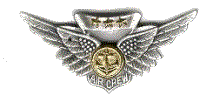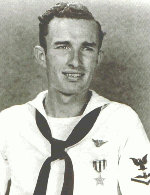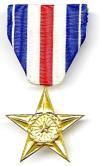Navy Patrol Bombing Squadrons 102/14 AssociationCombat Aircrew Wings |
Patrol Bombing Squadron 102
|
THE SECRETARY OF THE NAVY
|
 |
EDWIN B. DORE'
For service as set forth in the following
CITATION
"For conspicuous gallantry and intrepidity as Gunner of a Liberator Search Plane in Patrol Bombing Squadron ONE HUNDRED TWO in action against enemy Japanese forces in the Western Pacific War Area on March 27, 1945.
In the face of intense hostile antiaircraft fire, DORE’ rendered valuable assistance to his pilot in carrying out a determined attack to destroy a heavily armed picket boat and, when his plane was severely damaged by heavy fire, aided materially in bringing the crippled aircraft safe to base.
By his courage, aggressive spirit and devotion to duty, he upheld the highest traditions of the United States Naval Service.
For the President,
|
